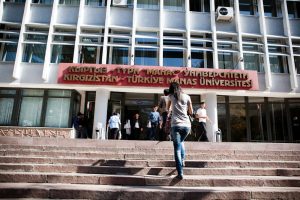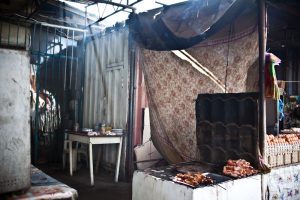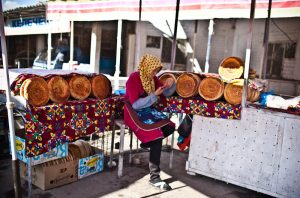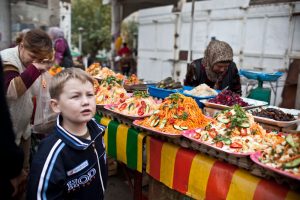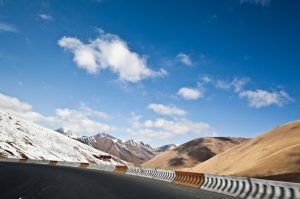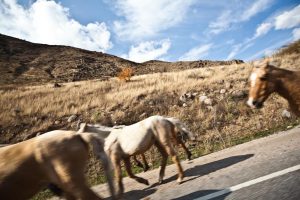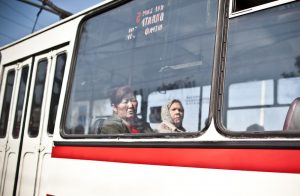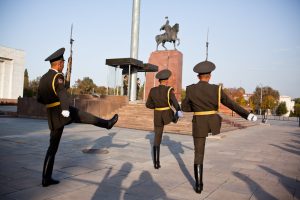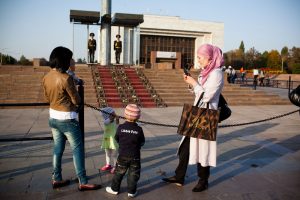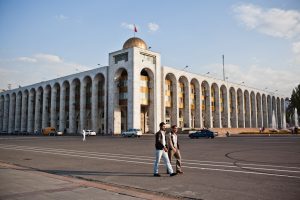3 Minutes with Sue Anne Tay
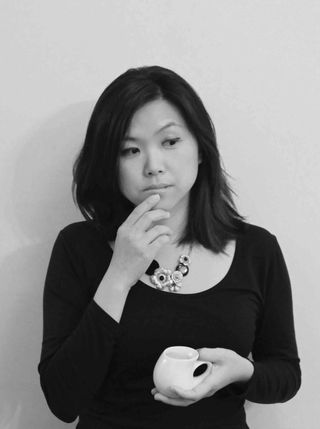
Sue Anne Tay is a Singaporean photographer based in Shanghai. When not armed with a camera, Tay dons a suit as Senior VP and strategist at HSBC. Her widely read blog ShanghaiStreetStories.com focuses on Shanghai’s urbanization trends and attempts to preserve its heritage architecture. Tay is also the contributing photographer for ChinaInCentralAsia.com, an ongoing research project charting China’s growing influence in the Central Asia region.
Tay’s work has appeared in National Geographic, The Atlantic, Foreign Policy and Southern Window, China’s leading current affairs magazine. She is also a co-author of Still More Shanghai Walks: Shanghailanders & Shanghainese (Old China Hand Press, 2011), a book that chronicles what’s left of old Western architecture in a now-booming Shanghai.
1) I guess the question on quite a few of our minds is… what is Kyrgyzstan like?
Kyrgyzstan is a dream for any nature lover. The landscapes are simply stunning as the country is mostly made up of mountains, valleys, glaciers, gorges and clear lakes (most famously, Issyk Kul Lake). Hence, eco-tourism is a major driver of the local economy.
A drive from the capital Bishkek in the north starts with beautiful snow-capped mountains and ends in the southern provinces surrounded by lush, tropical landscapes of Fergana Valley. In between, you see herders with hundreds of sheep, horses and yak dotted along highways and over mountains because the Kyrgyz are historically semi-nomads with a strong tribal culture. There was no concept of a sovereign state until the territory came under the Russian empire and later Soviet Union. Independence only came in 1991, so politically it is a young country.
I find Kyrgyz to be very friendly due to the tourism culture and also very laid back. The Kyrgyz are predominantly Muslim (around 80%) with a more secular brand of Islam as they co-exist (though not always peacefully) with minority ethnic Russians, Uzbeks and Tajiks. The sense of tradition varies; people in the capital Bishkek mainly speak Russian. As a Tsarist Russian and Soviet administrative centre, Bishkek is like a sleepy East European town with strong Russian influences. But as you move south, the Kyrgyz language and semi-nomadic cultural practices are more deeply rooted.
Being landlocked by Xinjiang province in China, Kazakhstan, Uzbekistan and Tajikistan, Kyrgyzstan makes a first great stop for a really unique travelling experience.
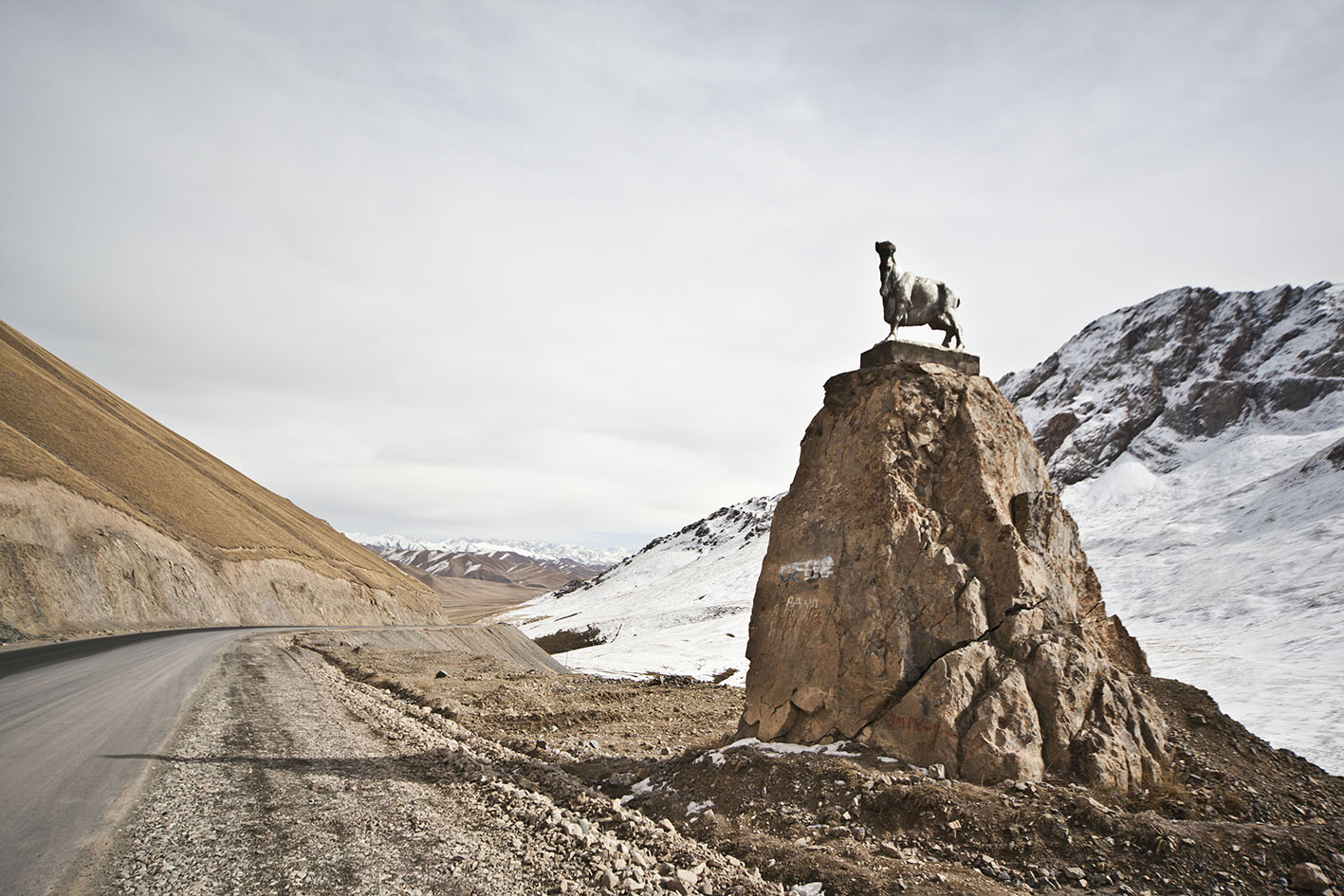
2) From growing up to living in a diverse and cosmopolitan city, could you relate to the Kyrgyz and their culture? Could they relate to you?
I’m pretty unabashed when it comes to approaching strangers and had a ball of a time talking to pretty much anyone who could understand me! It helps that I can manage a smattering of Russian, and younger people in cities are more comfortable with English.
In my time there, college students left the deepest impression, especially in the capital Bishkek. If there was anything good the Soviets left behind, it’s a strong emphasis on education. Prospect Mira (or Peace Street) is lined with universities and colleges and I spent a few afternoons talking to students who spoke about their hopes and aspirations, for themselves and their country. I think that’s a universal theme that really closes any cultural gap.
They talk about how Kyrgyzstan’s cities are teeming with well-educated young people but given few good opportunities. The country is still less developed compared to say Kazakhstan, Russia and China, so everyone wants to leave for better prospects. They often go to Russia to be construction workers, shop keepers and if lucky, students. No matter how tough or discriminatory life can be in Moscow, wages are still significantly higher than back home. I see these problems in China and across Southeast Asia, so I think it’s easier to relate to people than one thinks.
3) Does bride-kidnapping really still exist?
Not in the major cities but it still occurs in the rural areas. In fact, more than 8,000 care are reported each year. Often times, the girls are first raped and the girl’s family would rather agree to a wedding than take her home because her honor has been violated.
Bride-kidnapping was part of the nomadic cultures in Kyrgyzstan and Kazakhstan. Even though Kyrgyzstan has criminalised bride-kidnapping, and the President has increased the penalty from 2-7 years to 5-10 years, the severity of the penalty is seen to be no more severe to sheep theft. Can you imagine?
4) Food is a topic always at the top of our minds, so we have to ask – what was the most delicious or interesting thing you tried?
My favourite has to be samsi. They are delightful pastry pockets that are stuffed with morsels of lamb meat and fat and baked in tandoor ovens. Lamb in Kyrgyzstan is deliciously tasty because the sheep graze in lush plains and are freshly slaughtered for cooking. Which makes shashlik skewers a second favorite when paired with fresh tomatoes, cucumbers and onions.
In Bishkek, the owner of our guesthouse, Guliya, a very warm Kyrgz grandmother, plied us with a bountiful breakfast of home-cooked warm golden blinis (a thin pancake) smeared with home-made fruit preserves, buttery honey cakes and crumbly cookies. Just heavenly.
Since young I’ve always dreamt of going to art school (I even know which school I want to go to!) and recently I’ve been looking for ways to create more awareness for my artworks. This year has been extremely rewarding and full of surprises. I’m happy with where things are now, being able to balance my time (and wallet!) with my full time job and my weekend art pursuit.
5) Is their naan anywhere similar to the ones we get back home?
If you’re thinking roti prata, not really. Their naan is shaped like a frisbee but with a thick and spongey crust, perfect for soaking up lamb fat. If left out long enough, the naan can harden and may be wieldy as a weapon!
6) Back to photography. What kind of subjects and themes do you feel most comfortable shooting? Which ones do you feel more challenging to tackle?
I love street photography in crowded cities with plenty of natural sunlight. It’s easy to blend into a large crowd or fade into the background when you’re moody. If you’re feeling adventurous, chat up strangers for portraits or to learn a little about the neighborhoods. It’s even better when a city offers up hidden architecture or residential pockets of random wonders. That’s how I feel about Shanghai’s lane alleys, old shikumen and heritage architecture.
Food photography has to be most challenging because I don’t have a flair or patience for food styling, which makes a world of a difference. I also imagine how annoying it must be for friends to wait while you frantically shoot course after course.
7) You did do a commissioned series for SPRMRKT on café culture in Shanghai. And you even chanced upon a Singaporean-owned café as seen on our featured Instagram feed. That was pretty neat. Do tell us more. How are the cafes or eating houses different than the ones we get in Singapore?
Shanghai’s cafe scene, and F&B scene in general, has always been the most modern and Western within China. Mingling with a large expat population, young Chinese are very exposed to international trends and all things Western, so you are always seeing new start-ups and explorations of new concepts by both enterprising locals and foreigners, albeit with varying successes. Within the former French Concession in Shanghai, there is an Italian restaurant on every other block, coffee shop and bakery. While I think it’s encouraging to see this diversity, I’d like to see more Chinese-oriented and stylish cafes, serving classy but understated local fare and Chinese tea. They have tea houses but are less popular with young Chinese who associated anything Western as novel and attractive. I think Beijing as a city is better at melding East and West. In Shanghai, there is rarely a good medium ground, I suppose it’s the same in Singapore, no one will try to build a stylish hawker cafe. For a good bowl of mee pok, I always go to a hawker centre.
In general, Singapore-owned retail outlets in China are cleaner, so the decades of government campaigns have certainly paid off. To share something amusing, I once visited a cafe in Kashgar in southern Xinjiang province that was, lo and behold, opened by a trio of Singaporeans. They also own a hotel in Tashkurgan region in south Xinjiang, hours away from the Sino-Pakistan border. The toilets were so clean (a rarity in Xinjiang or central and western China for the matter) that I could have eaten my lunch in there!
8) I reckon we have better coffee? 🙂
Well, getting a good cup of coffee in Shanghai is a lot easier than before. Even young baristas at Starbucks and Costa chains undergo enough training to operate the expresso machines and serve up a very decent macchiato.
You’re also seeing more specialized cafes like Seesaw Café or Café del Volcán in Shanghai that emphasize the origin and quality of coffee beans to their customers, including the best way to brew them. Young Chinese are very open to new ideas and cultures, so while they predominantly prefer tea, the idea of a good cup of coffee is becoming more appealing.
9) You’ve had your photos published in National Geographic online, leading US journals like The Atlantic and Foreign Policy, China’s top political commentary magazine Southern Window and most recently, a premier lifestyle magazine “Sqft” scheduled to launch at the end of July 2013. Any thoughts about going into photography full time?
Not anytime soon. My day job in rural banking is actually very interesting as I’m working on and travelling to inner provinces that are really China’s next frontier markets. Beijing is so yesterday. Next stop, Pingjiang county in Hunan province!
So far, I’ve been able to balance cherry-picking interesting photography and writing assignments and collaborations. For the Central Asia project, I took unpaid leave and was lucky to work with smart and easygoing researchers, one of whom is my husband. Perhaps a longer sabbatical from work or the ability to sleep less will appease my curiosities.
It’s a tough climate for photographers (and writers) in a time when we’re blighted with excessive, often poorly edited images and information that are churned out to meet a ravenous and instantaneous demand. Many major newspapers and magazines have had to shut down or move online, so more than ever, editors are paying less or not at all for original content. This is why I have immense respect for full-time photographers, who have to constantly monetize their work while preserving their voice, and fend off others who pirate their work.
10) Any future projects you’re currently working on or thoughts about your first show in Singapore that you’d like to share with us before we close?
The China in Central Asia project is still ongoing, my project mates have gone to Afghanistan and Turkmenistan and I’m hoping that I’ll be in Tajikistan this October.
Otherwise, I’m still dedicated to my blog Shanghai Street Stories, whereby I photograph older neighborhoods undergoing demolition and interview residents. I piece together the history of the lanes/houses while reflecting conversations through stories. There’s a lot of interest in this form of storytelling, and I’m all for raising awareness about the other face of Shanghai.
I’m also looking to expand a previous solo project The Roving Exhibit into a wider artist collaboration, basically carrying photographs printed on a mobile board and exhibiting around Shanghai’s old neighborhoods.
Thanks again to SPRMRKT for so kindly hosting my work, and being such a welcoming platform and supporter of the arts in Singapore.
